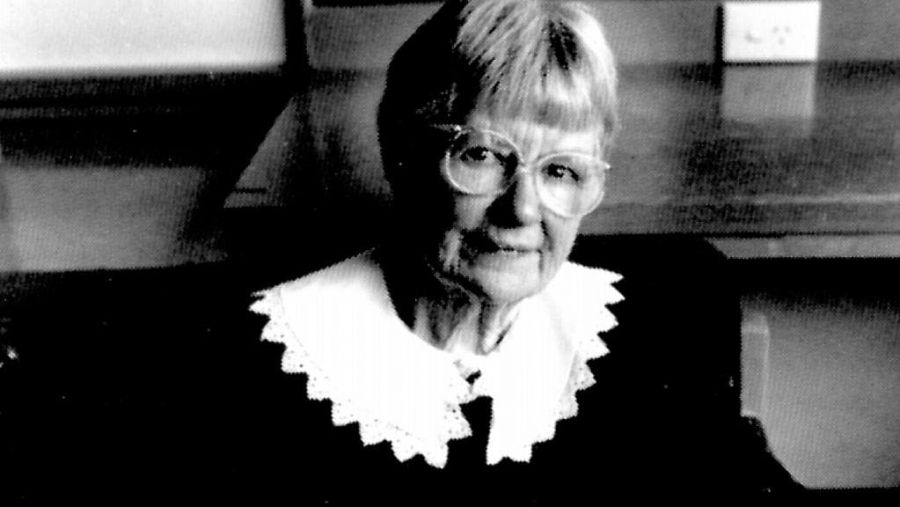
- Free Article: No
- Contents Category: Poetry
- Custom Article Title: The haunting of Gwen Harwood
- Review Article: Yes
- Online Only: No
- Custom Highlight Text:
What is the relation between poet and critic? No, not a topic for yet another tedious and oppositional debate at a writers’ festival. Rather, a question about the nature of oppositions, and the possibility of disrupting, or even suspending them, in the varied and delicate acts of literary criticism. Let me frame my question even more precisely: who is the ‘Gwen Harwood’ to whom I refer when I write about the poetry of a women who in recent years has become increasingly public, celebrated and accessible?
Chatting her way through the genuinely different critical interests that represent Plath to us in varied ways, Rose demonstrates with persuasive ease their dualistic structures. We fall prey to such a pattern, for example, when we argue that either Sylvia Plath or Ted Hughes generates the greater degree of poetic or psychological violence. Similarly, Plath is neither the pure baby victim of patriarchy, nor the sole generator of her own psychic distress. Here is Rose: ‘One does not become pure as the other falls into the dirt (that crazy pass the parcel acted out by so many writers on Sylvia Plath).’
Sensitive and personal as it is, the haunting of Gwen Harwood – both the poetic and private ghosts with whom she wrestles and her own ghostly presence, looking over the critic’s shoulder – comes nowhere near the notorious contentions and litigiousness of the Plath estate, or the political complexities of Plath’s critical reception. Even so, given Harwood’s increasing importance, and the current wave of critical and biographical interest in her life and works, it is tempting to position her as a testing ground for feminist poetic criticism in Australia.
Not on obvious thematic grounds, perhaps. Harwood’s poetry cannot easily be described as woman-centred, or as addressed primarily to women. However, the best feminist criticism has always thrived, not on the obvious, but on the oblique. A comparison with Dorothy Hewett may help make the point. Harwood’s life and politics seem by contrast far more domestic, less radical, more mainstream; but who would argue that Harwood’s poetry showed less strength, force or passion? Further, is this the best critical vocabulary in which to describe or interpret her poetry? And is interpretation really my aim? I might rephrase my questions completely. What form of feminist critique might Gwen Harwood generate? What contexts provide the most appropriate frames to her work?
Current critical fashion in Australia offers me a seductively easy option. Writing for an author-based series suggests a narrative frame; a biographical, developmental model, organised around a corpus of works, signed by a known, or theoretically knowable subject. Most of the critical work on Harwood published so far follows this model. Unlike Sylvia Plath, though, my author can answer back, can commend or condemn readings and interpretations. Gwen Harwood is exceptionally, and increasingly, generous of her time and energies to scholars, interviewers, students, and journalists. Her reputation continues to flourish, as occasional versifier, as contributor to conference panels, as prize-winner, as audience member in discussions of her own poetry, as librettist, as colleague and friend, and perhaps most of all, as correspondent.
The temptations, then, to appeal to Harwood as authority are legion. And so are the dangers, of course. Alison Hoddinott’s recent study is a clear, and touching demonstration of how fine the dividing line can be between criticism of a friend’s poetry and heroine worship. Jenny Strauss’s Boundary Conditions: The poetry of Gwen Harwood grapples honourably with the problem of Harwood’s love of disguises, personae and masks, but still tends to appeal to Harwood as governing authority over all these operatic voices.
Foucault does offer a solution, of course, which is to focus on ‘Gwen Harwood’ as a poetic signature written by the desires and interests of her readers, rather than as the living subject, one of the starting points of biography, for example. And certainly there is much to be gained from an analysis and critique of the orthodoxies in Harwood studies, a critique mounted from an oblique angle made so much easier for me by the work of these other women. Such a Foucauldian project sits in some tension, however, with a feminist insistence on women’s lives, on the circumstances in which real women, not disembodied author-functions, write poetry – and literary criticism.
But if it is impossible, as I would argue, for a woman poet not to haunt, and to be haunted, it is perhaps also necessary for the feminist critic always to be haunted by such difficulties. Rather than exorcising ghosts, then, my task is to keep them before me.


Comments powered by CComment